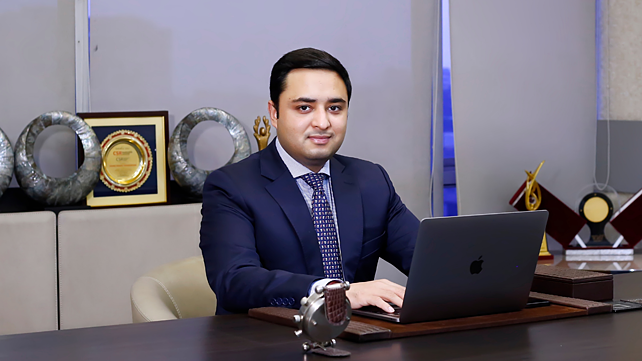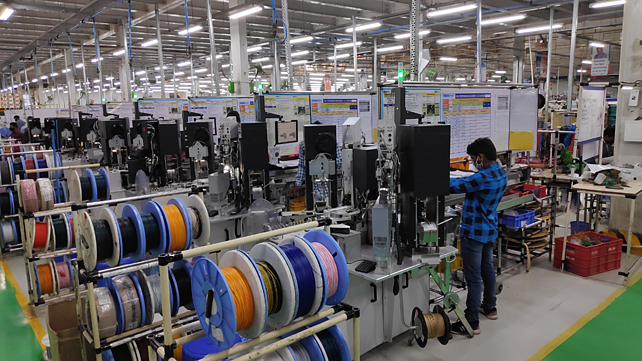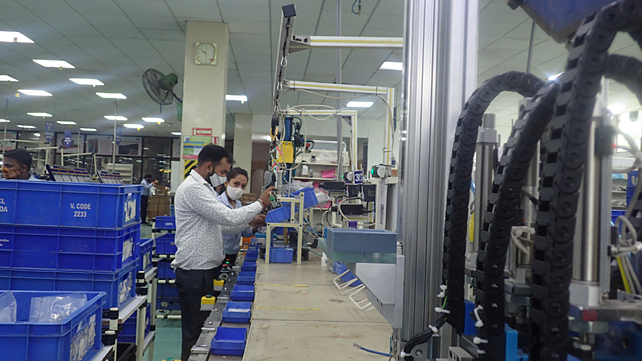
Aakash Minda is Executive Director of Minda Corporation, leading Group Finance & Strategy. He is also Chief Operating Officer of the Interior Plastic Division at Minda Corporation, a business he managed globally based in Germany. In addition, he is COO of the Electronics Manufacturing Excellence Division as well as Spark Minda Green Mobility Systems. He is also an active member of institutions such as CII, ACMA, YBLF and EO.
How has business been overall and how does it look henceforth?
If you look at the overall environment, a lot has happened in the last 18 to 24 months, within Minda Corporation and across customers and suppliers. Some are challenging, and some are opportunities that one has to navigate through. Raw material prices are shooting up, whether it's aluminium or copper or electronics. Minda Corporation is doing a lot in various areas in order to be proactive and take every bit as an opportunity.
Did the pandemic force you to rethink the way you were looking at business across various verticals and businesses?
The pandemic has forced us to look at every bit of the organisation; primarily agility, right from marketing to our internal cost structure – both variable and fixed. The other important area we are focusing on is digitisation – implementation of IT tools all across, whether it's project management, customer engagement, RFQ handling, employee engagement and satisfaction.
When it comes to the engineering aspect, we've been trying to see how we can focus on three aspects – disruption, time to market and affordability. For an industry like us, and the space that we operate in, technology disruption is very important. In the last 18-24 months, we've been focusing and motivating our teams to file as many patents as we can in order to look at the future.
Overall, we have been looking at technology, people, IT automation, our cost structures and exploring other segments and avenues, such as exports and aftermarket.

What are some of the opportunities that you're chasing, and where do you see growth coming from?
At Minda Corporation, we are targeting a thought leadership position in technology and a cost leadership position in manufacturing. In the technology domain, we are looking at the current products that we have and how they can go through enhanced electronification. All our product lines are going to be positively impacted, when it comes to electronification or electrification.
I will break this into two or three parts – one is our legacy products, which is keyless solutions, wiring harness, instrument clusters, sensors, plastic interiors and die-casting. We are the leaders, when it comes to two-wheeler vehicle access. We've been able to file 21 patents in this area. Likewise, wiring harness and other products are also undergoing a premium route and have more content.
Die-casting is a very important aspect of lightweighting, and we are looking at export orders. We are focussing on how and what we can play in EV thermal management.
Our utmost focus in the next few months and years is going to be in the area of clusters and sensors, where normal analogue clusters or speedometers will move to TFTs and LEDs. More and more sensors are going to come into this area.
In new product lines that are about to take off, we have already ventured into DC-DC converters, battery chargers, antenna solutions and two-wheeler ADAS. Some of these product lines are already being developed, and we have won orders from customers.
Thirdly, talking about disruptive or completely new technologies, we are working on topics like cybersecurity and human machine interface (HMI), particularly on soft touch screens and surface finishes.
All of this is being driven by our 500 plus engineering family in the group, of which 350 of them are focussing on advanced electronics and embedded hardware and software, even providing services to our joint venture partners in Europe and the USA.
How prepared are you to go to market with the new technologies that you are working on?
In the area of vehicle access or keyless entry system, we set up an R&D centre in 2017 and have more than 150 engineers working in this area. For example, the traditional lock and key is going to go away, and will be replaced by key fob and through phones. That is what we've been working on.
We've already been exporting these products to European two-wheeler manufacturers, and have now started winning orders from the likes of Hero MotoCorp, Ola Electric, and other large and small start-ups for such product lines. As a kit value offering, from the current traditional INR 300-400 per set, per two-wheeler, it is going to about INR 3,000-5,000, depending on the configuration of the bike manufacturer.
We have a roadmap on how to go to the next level of access, when it comes to cybersecurity and other things.
In the area of clusters and sensors, we just acquired the remaining 49% stake of our joint venture partner in Minda Stoneridge. This company is manufacturing instrument classes and sensors for all segments of vehicles. Particularly on two-wheelers, with tablets and smartphones replacing analogue clusters, software that goes along with it is going to be really important.
This is where we have been building our teams, alliances, partnerships internally, which could give us a lot of push going forward. We also see a lot of synergy in periphery areas like electronic control units (ECUs), multifunctional ECUs and start-stop buttons.
For the interior systems product line, we are focusing on improving our penetration and kit value in four-wheelers. From making air vents and other products earlier, we now make centre consoles for Maruti Suzuki India and other value added kinematic parts for OEMs like Tata Motors, Maruti Suzuki India and Mahindra & Mahindra.
In the four-wheeler legacy businesses, our vehicle access JV with Vast is very rightly positioned to offer these advanced technologies. Our recent JV with INFAC of South Korea for antenna solutions will have solutions for connected mobility.

Tell me more about Spark Minda Green Mobility Solutions.
The Indian electric vehicle market, based on different reports, is likely to grow from being a $5 billion industry in 2020 to about $45-50 billion industry by 2026 with a CAGR of 44% during this period.
We started Spark Minda Green Mobility Solutions as a wholly-owned subsidiary in November last year to focus only on electric mobility for the non-legacy businesses. This new company will focus on battery, battery management system, motor, motor controller, DC-DC converters, chargers, charging solutions, etc.
In the last few quarters, we have won new businesses with Revolt Motors, Ola Electric and larger players like TVS Motor, TVS-BMW, and Hero MotoCorp, among others.
We have also acquired a 26% stake in Bangalore-based EVQ Point, which is into EV charging solutions, EVSE (Electric Vehicle Supply Equipment), on-board and off-board chargers. We are an exclusive manufacturing partner to EVQ Point, and they are going to support in improving the product range of the chargers as well as the product quality. With their support, we are now going to be offering chargers in the range from 350 W to 6.6 kW.
From a Minda Corporation perspective, when we started this division, we followed a three step approach – the first one was to do things in-house by in our R&D centre; second was to look for partners and alliances to offer these technologies and the third step would be to offer products and services that can be converted into joint ventures for global players.
Products in Spark Minda Green Mobility Solutions are manufactured by following a 3X3X3 strategy – three segments (two-, three- and four-wheelers) up to three kilowatts (because that is where the majority of the market is going to be) and three products (chargers, DC-DC converters and battery management systems).
How are you building your engineering and R&D capabilities within the group?
We set up an R&D centre in 2017 that currently houses 350 people focussed on advanced technologies and products. As a group, we have filed more than 180 patents, with over 90 patents being filed in the last five years. In the area of keyless entry alone, we filed 21 patents.
Talking about software and other application engineering and core research, we have about four PhDs in our R&D centre, focussing on research into various aspects. However, due to reasons of confidentiality, I will not be able to disclose more details.
From a financials perspective, what's the kind of target that you're chasing in the next few years?
We've been hovering at about 8-9% EBITDA margins in the last few years. In the last four to six quarters, we have come into double digit EBITDA margins. In Q2, Q3 and Q4 of FY21, we outperformed each previous quarter in terms of top line, bottom line and PAT. Barring COVID and couple of other challenges such as shortage of semi-conductors, we are looking at a double digit growth.
From a top line perspective, our endeavour is to grow 10-15% higher than what the industry grows at in the next few quarters and years. On the operational side, from hovering around 8-9%, we've been able to come to about 10% and higher. In the next few quarters, we want to consistently deliver these numbers and then grow to the tune of about 12%.
One of the key aspects we are focusing on is the generation of free cash flow, which is improving quarter on quarter. From a negative cash flow last year, we've been able to register a positive INR 44 crore free cash flow in the first half this year.